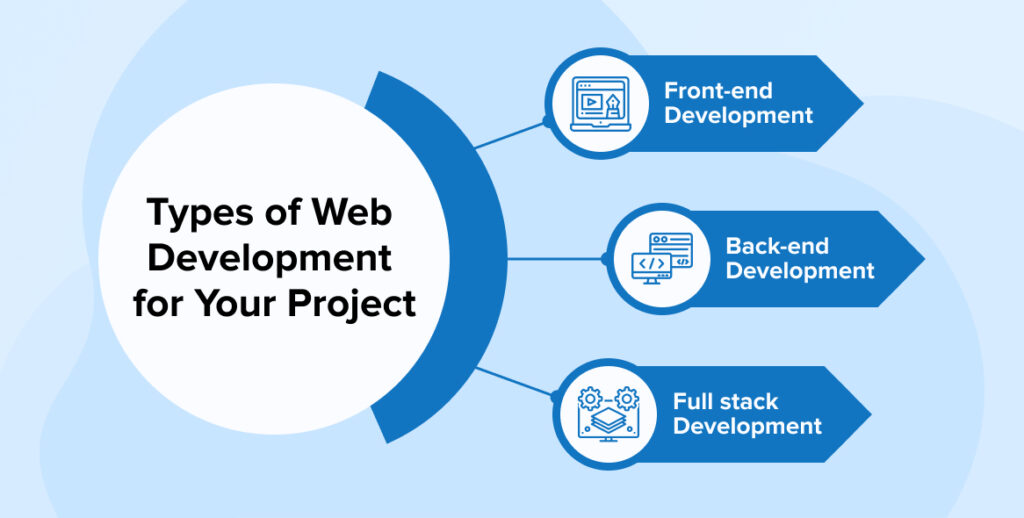How to Become Web Developer in 2024? -Beginners Guide

You all will agree on one thing: technology has become a necessity in our daily lives. From casual surfing to inventing something big, we are required to use technology for almost everything. Web developers create the websites and applications we highly rely on. Hence, web development is the most interesting thing that is regulating everything. If you are curious about how to become web developer, read this article till the end.
This beginner’s guide on ways to become a website developer contains the basics of web development and everything you need to know.

What is Web Development?
Let’s first understand about the web development. Basically, website development is the creation and maintenance of websites and applications. Web development is what runs behind the scenes to maintain the website’s appearance and functionality that is directly connected to a smooth user experience.
All the web pages you use on the internet are the creation of web developers. They create them by using different programming languages. Coding is the word you must have heard of. They write lines of code to display something meaningful in front of us.
How do you Become a Web Developer from Scratch?
One thing people wonder about is whether web development is only for technical people. But that is not the case. A non-technical person can also learn programming languages. The only thing you’ll need is passion, interest, and dedication to learn all about it. Because, to be honest, it won’t be easy for a non-technical person.
From scratch, you will learn about HTML, CSS, and JavaScript. These languages will build the foundation for your upcoming journey.
How to Become Web Developer: Step-by-Step Process
Step 1: Learn Web Development Fundamentals
Learning web development involves mastering the basics first. HyperText Markup Language), CSS (Cascading Style Sheets), and JavaScript are the foundational elements of web development and serve as the building blocks for all web projects. To become proficient, many aspiring web developers opt for coding tutorials that deliver tangible results and improve employability. These tutorials provide a concise and immersive learning experience, making them a valuable investment for prospective web developers.
Web development is an ever-evolving field, and staying up-to-date is vital for success. As new innovations shape the landscape, web developers must keep pace with changes in programming languages, tools, and trends. This dynamic field requires continuous learning and adaptation to stay relevant.
Step 2: Build Your Developing Skills
If you’re interested in web development, you might be wondering how to get started. To begin creating simple projects, you’ll need to have some basic knowledge of HTML, CSS, and JavaScript, as well as programming skills. As you continue to work on projects, you’ll gain more experience and expand your skills as a web developer.
Becoming a proficient web developer requires not only technical skills but also non-technical skills like organization, communication, and customer service. It’s important to have a good balance of both. Let’s take a closer look at these technical and non-technical skills.
A.Technical Skills
Programming skills, such as programming languages, frameworks, version control, and responsive design, are the primary components of technical skills.
Programming
A web developer uses programming languages, libraries, and frameworks to create websites and applications.
Frameworks and Libraries
Web developers utilize libraries and frameworks, which are collections of pre-written code, to simplify their programming tasks.
Responsive Design
Responsive web design involves creating websites that adjust to fit different screen sizes, platforms, and orientations based on user behavior and environment.
Version Control
When creating software or web apps, it is common for multiple people to work on different versions of the same project. This can lead to inconsistencies between projects. To avoid this problem, version control is used. Version control, also known as revision control, is the management and control of projects.
In the web space, version control is software that stores, tracks, and updates changes to a master copy of a project. This master copy is then worked on by multiple people. By using version control, teams can avoid conflicts and ensure that everyone is working on the same version of the project.
Visual Design
Visual Design aims to improve the appearance and usability of a design or product using fonts, images, color, and layout.

B. Non-technical Skills
For website development, you also need to learn some non-technical skills, including communication, problem-solving, project management, and time management.
Communication
Effective communication is essential for developers to understand client’s needs, collaborate with team members, and convey technical information to non-technical stakeholders.
Customer Service
Customer service skills are useful for maintaining strong client relationships, receiving positive feedback and referrals, and establishing a good reputation in the industry.
Detail-oriented
Having detail-oriented skills is crucial in web development because even minor mistakes can have a significant impact on the website’s functionality and usability. Being detail-oriented enables developers to identify and fix errors before they become major issues and ensures that the website fulfills the client’s requirements and expectations.
Problem-solving
Web development often involves complex challenges that require good problem-solving skills to resolve on time. Sound problem-solving skills involve breaking down problems into manageable steps, testing and debugging code, and finding creative solutions.
Step 3: Develop Knowledge About Web Development Tools
If you’re starting out in web development, it’s important to know the tools you’ll need. These tools are essential for creating and maintaining websites. They help developers write and modify code, test and debug websites, and manage projects. Some common web development tools include text editors, integrated development environments (IDEs), and version control systems.
Step 4: Join a Course in Web Development and Relevant Certifications
If you’re interested in web development, you can learn how to create and maintain websites by taking online courses. ToolDart has a range of courses that cover topics such as HTML, CSS, JavaScript, and web development frameworks.
If you want to show potential employers your skills, you might consider getting a certification in full stack web development or Web Development Professional. When choosing which course or certification to take, it’s important to think about your goals, learning style, and budget. Make sure to read reviews and recommendations from other learners to find the best option for you.

Step 5: Take up Web Development Projects
To become a web developer, you need to learn a lot. A good way to gain experience and build a portfolio is to take on small, manageable web development projects. You can start by building a personal website or creating a simple e-commerce site.
Use online resources to learn new skills and solve problems as you work on your projects. This will help you develop your problem-solving skills and deepen your understanding of web development.
Add your completed projects to your portfolio and share them with others. This will show potential employers your skills and help you stand out in the competitive field of web development. Remember to continue learning and challenging yourself as you progress in your web development journey.
Step 6: Build Web Development Portfolio/Resume
If you’re a coder, it’s important to create a portfolio that can demonstrate your skills and experience to prospective employers. First, make a list of all your web development projects and the technologies you used for each one. This will help you identify your strengths and areas for improvement.
If you want to be a web developer, your resume should list skills and programming languages that match the job description. The most common requirement for a web developer job is an extensive knowledge of HTML and CSS.
As you gain more experience and complete more projects, update your portfolio and resume to show your growth as a developer.
Step 7: Join a Useful Community or Internship
Joining a web development community or internship can provide valuable opportunities for a beginner to learn from experienced professionals, network with peers, and gain hands-on experience.
If you enroll with ToolDart for the full stack development course, you’ll get a free internship certificate along with the course completion certificate. This will save you time doing the internship.
Step 8: Apply to Relevant Jobs
If you’re new to web development and are looking for web developer jobs, you can search online job platforms like Indeed, Glassdoor, and LinkedIn. To increase your chances of getting hired, it’s important to customize your resume and cover letter for each job and prepare well for technical interviews.
With ToolDart, you’ll get a 100% job after completing the course.
Step 9: Prepare Yourself for Interviews
Preparing for a job interview is an important part of beginning a career in web development. It’s a crucial step towards becoming a professional web developer. Proper preparation for an interview can greatly increase your chances of getting a job in this field. Therefore, follow all the tips available on the internet to make yourself ready to meet people in person.
Step 10: Get a Relevant Job
If you want to become a web developer, it’s important to understand the principles and practices of web development and have a strong project portfolio.
- You should also be aware of the different job titles in this field, such as frontend developer, backend developer, full-stack developer, web designer, and UI/UX designer.
- Each job requires different skills, so it’s important to research job postings and tailor your application materials accordingly.
- Additionally, staying up-to-date with the latest trends and technologies in web development can make you a more competitive candidate in the job market.

Types of Web Developers
Before asking how to become a web developer, we need to understand there are different types of web developers.
There are three types of web development: Frontend, Backend, and Full-stack development. Frontend, backend, and full-stack developers work in each category.
1) Frontend Development
Frontend development, also known as client-side scripting, is responsible for the visual elements and features of a website that users interact with. It includes the code that runs within a web browser and manages the layout, fonts, colors, menus, and contact forms that visitors see on the website. In other words, frontend development drives the user experience of a website.
Frontend development plays a crucial role in designing a website that delivers an optimal user experience. It ensures that the website is easily accessible and responsive across different devices, such as mobile phones, tablets, and desktops. This makes it simpler for users to navigate the website and access the information they need, no matter what device they’re using.
HTML, CSS, and JavaScript are some of the programming languages used in frontend development. If you’re interested in becoming a web developer, taking a frontend development course can help. You’ll learn HTML, CSS, JavaScript, and frontend frameworks like React, Angular, or Vue.
2) Backend Development
Backend development, also known as server-side scripting, refers to the part of website development that occurs behind the scenes. Though the user cannot see the backend, it is crucial for ensuring that the website remains dynamic and operational. Without it, you will not be able to make any modifications to your website.
In essence, backend development is concerned with server-side logic, databases, and application functionality and ensures that the frontend runs smoothly. Backend development involves the use of server-side languages such as Node.js, Python (Django), Ruby (Ruby on Rails), PHP, and database management systems such as MySQL and MongoDB.
3) Full-Stack Development
Full-stack web development is a process that involves building websites. The developer is responsible for both frontend and backend tasks, depending on the website’s complexity. This means that they handle all aspects of development, including the server side and user interface.
Here are some important things to know about full-stack development:
– It includes both client-side and server-side aspects that can make websites faster and improve the user’s experience.
– Full-stack developers have a lot of experience that can speed up the building or redesigning process and help solve problems.
– By learning full-stack development, developers can identify new technologies that can enhance website capabilities, such as advanced programming languages, low-code trends, or blockchain.
– Having knowledge of full-stack development can help developers create prototypes and minimum viable products (MVPs) quickly. This is useful for testing and iterating ideas more quickly.

Conclusion
If you are thinking about becoming a web developer in 2024, you are on the right path. It is a great career choice that will help you earn a handsome amount of money if learned correctly. With only a few steps, you can become a web developer. But remember, you should always need to upgrade your skills to stay strong in the market.
Becoming a web developer requires dedication, continuous learning, and keeping up with the latest trends and technologies in the field. However, with a strong work ethic and a passion for web development, anyone can become a successful web developer in the year 2024 and beyond.
If you’re interested in pursuing a career in web development, ToolDart can help you master the technologies that create seamless websites. Our courses are excellent for learning everything about web development.
So, enroll in our web development course and start building your career in this innovative field. We offer a 100% job guarantee to ensure that you will be placed after completing our coaching without struggling to search for a job.
Connect with us to learn more about how to become web developer!




